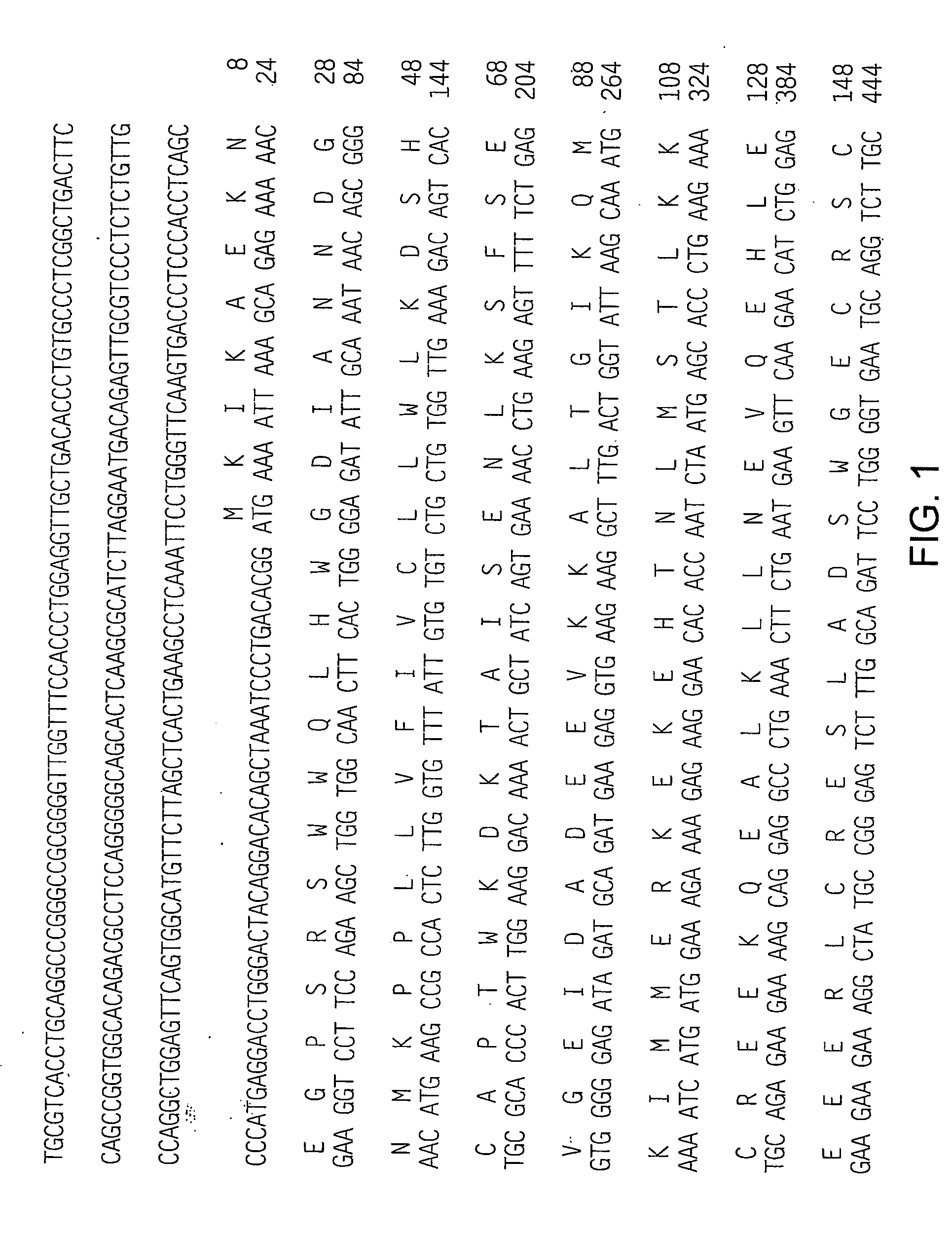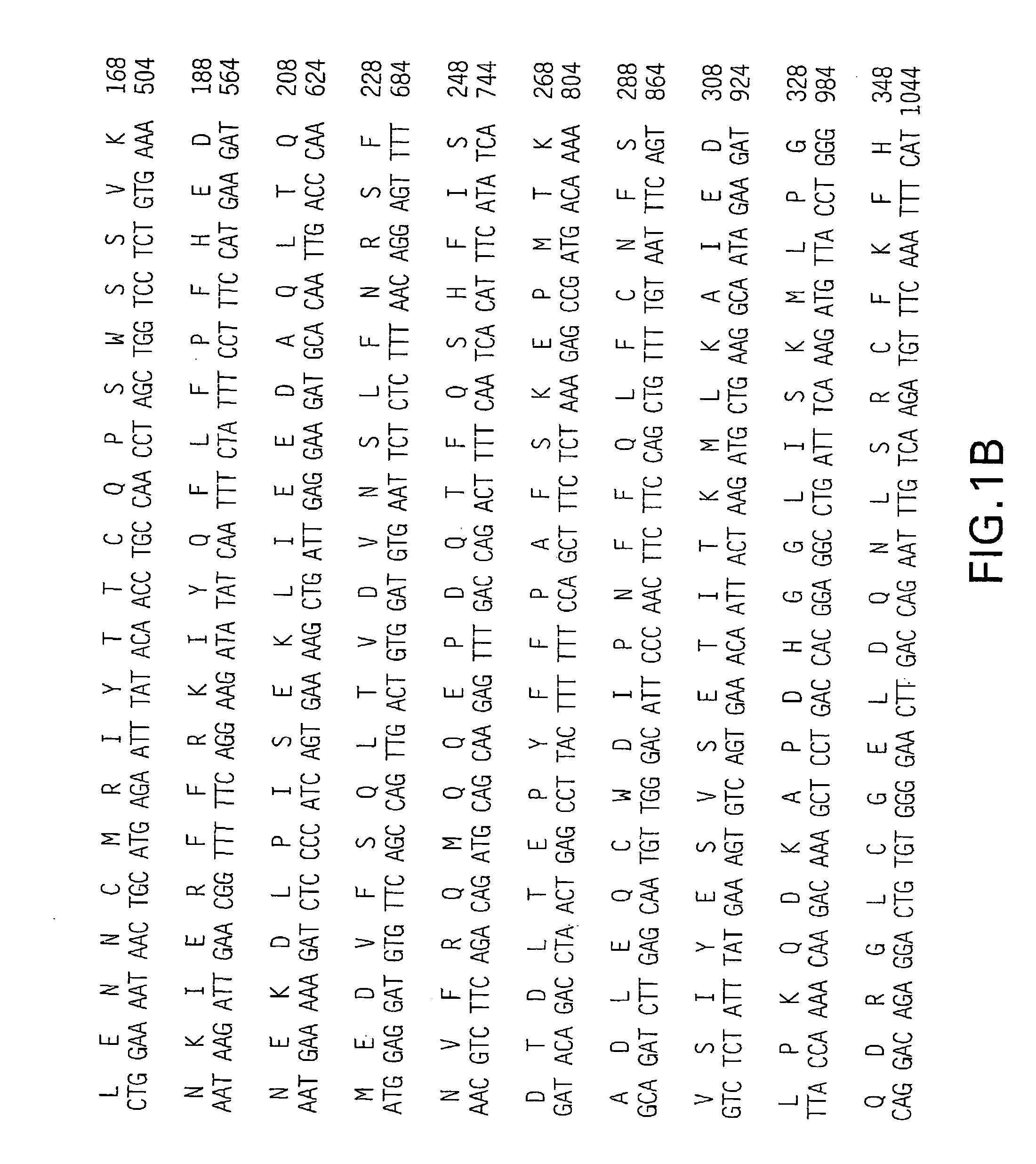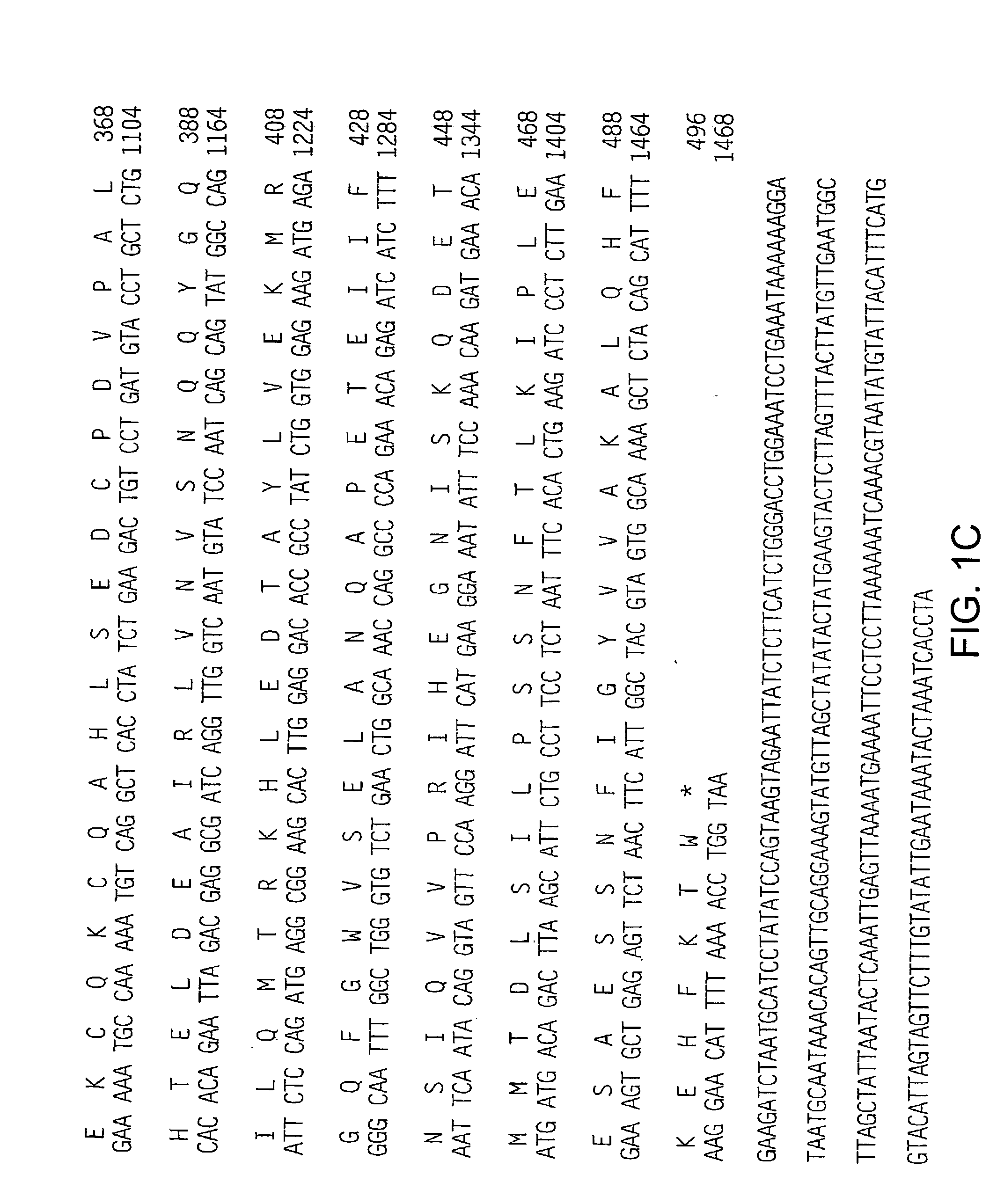Methods of compositions for diagnosing and treating chromosome-18p related disorders
a technology of chromosome 18p and composition, applied in the direction of peptide/protein ingredients, application, peptide sources, etc., can solve the problems of inability to predict the effectiveness of drug treatments, risk of progressive deterioration, and insufficientness of currently available drugs, so as to reduce or eliminate symptoms, reduce or eliminate symptoms of ts-mediated disorders
- Summary
- Abstract
- Description
- Claims
- Application Information
AI Technical Summary
Benefits of technology
Problems solved by technology
Method used
Image
Examples
Embodiment Construction
5.1. CHROMOSOME 18P NUCLEIC ACID MOLECULES
[0112] This section describes, in detail, the nucleic acid molecules of the present invention. In particular, the nucleic acid molecules of a gene which is referred to herein as "HKNG1" or the "HKNG1 gene" are described herein. The discovery and characterization of the human HKNG1 gene, including the genomic sequence of the HKNG1 gene and several splice variants and polymorphisms, are described in the Examples presented in Sections 6-9, below. The isolation and characterization of certain exemplary orthologs of the HKNG1 gene in other species (i.e., bovine, guinea pig and rat) is also described in the examples presented, below, in Sections 10 and 19. Further, vectors encoding fusion proteins of the HKNG1 gene product, which are also, therefore, considered to be among the HKNG1 gene sequences of the invention, are described in the Example presented, below, in Section 11.
[0113] The nucleic acid molecules of a second novel gene are also describ...
PUM
| Property | Measurement | Unit |
|---|---|---|
| volume | aaaaa | aaaaa |
| temperature | aaaaa | aaaaa |
| temperature | aaaaa | aaaaa |
Abstract
Description
Claims
Application Information
 Login to View More
Login to View More - R&D
- Intellectual Property
- Life Sciences
- Materials
- Tech Scout
- Unparalleled Data Quality
- Higher Quality Content
- 60% Fewer Hallucinations
Browse by: Latest US Patents, China's latest patents, Technical Efficacy Thesaurus, Application Domain, Technology Topic, Popular Technical Reports.
© 2025 PatSnap. All rights reserved.Legal|Privacy policy|Modern Slavery Act Transparency Statement|Sitemap|About US| Contact US: help@patsnap.com



